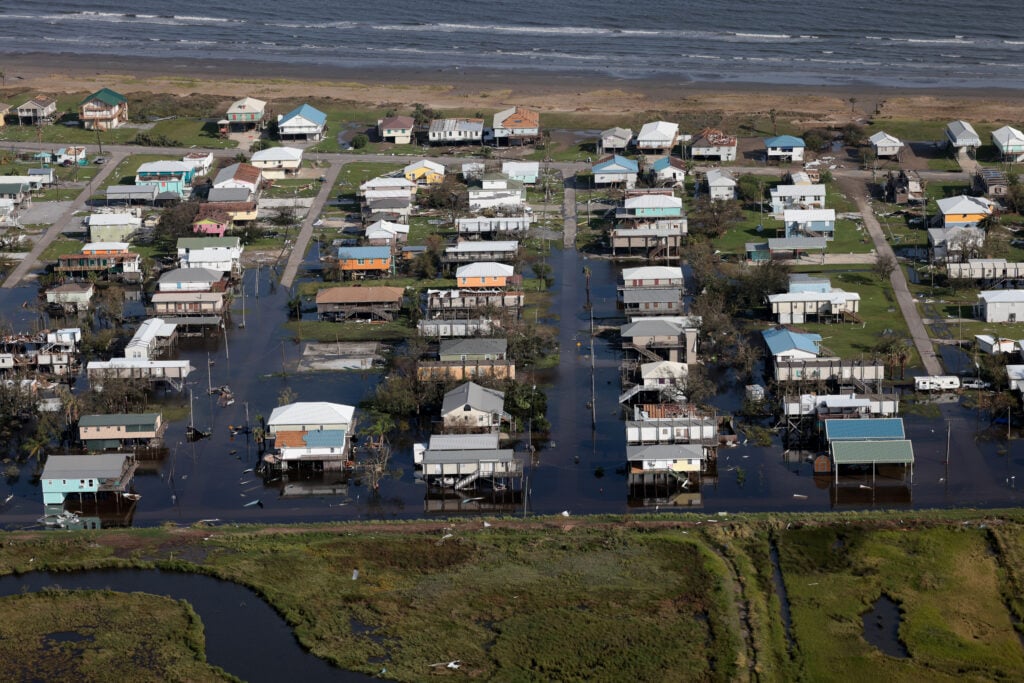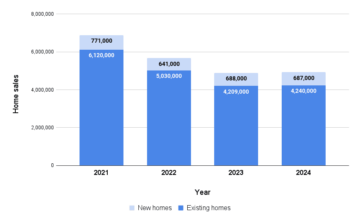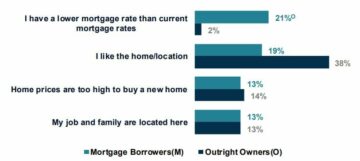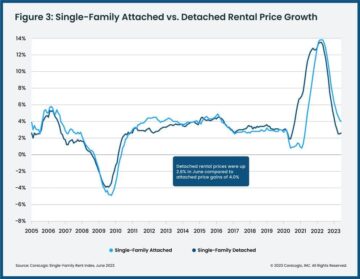
The National Flood Insurance Program is up against another deadline for renewal while a lawsuit from 10 states takes aim at its proposed pricing change.
No one can predict the future of real estate, but you can prepare. Find out what to prepare for and pick up the tools you’ll need at the immersive Virtual Inman Connect on Nov. 1-2, 2023. And don’t miss Inman Connect New York on Jan. 23-25, 2024, where AI, capital and more will be center stage. Bet big on the roaring future, and join us at Connect.
A federal program that provides flood insurance to homeowners in need is set to expire unless it is renewed by the end of the month, meaning those who need it could be hung out to dry.
The National Flood Insurance Program is meant to provide a safety net for flood-prone communities that might not have any access to insurance. Lawmakers are deadlocked over extending the program though, which has recently faced backlash over a new pricing model intended to make premiums better reflect a home’s risk.
“The only thing worse than what we have is nothing,” Louisiana Republican Sen. John Kennedy said in The Wall Street Journal this week.
There is still, however, a chance that Congress will find a way to renew the program before it lapses on Oct. 1 through legislation to prevent a government shutdown.
The impending deadline represents only one of the existential threats faced by the program. The Federal Emergency Management Agency is currently facing a lawsuit from 10 states that aims to block the program’s revamped pricing structure, which was rolled out as an attempt to fill in the programs funding shortfalls and ensure that homeowners in relatively low flood risk areas were no longer subsidizing those in higher-risk areas.
The new pricing would take years to be implemented and result in rate increases for two-thirds of the program’s 4.7 million policyholders. The states suing FEMA claim the new rates would slam property values, drive residents out of flood zones, and possibly lead to people losing their homes because they can no longer afford their insurance.
Average annual premiums could eventually double in 12 states under the revamped pricing, according to a report released this week by the research group First Street Foundation. The county set to see the steepest increases is Plaquemines Parish in Louisiana, where the average premium will surge more than sixfold to $5,431 from $842 in the coming years under the new pricing scheme, according to the report.
“Flood insurance policies have become their own natural disaster,” Louisiana Attorney General Jeff Landry, who is leading the lawsuit against FEMA, said in a statement.
Other states where premiums are set to more than double are hurricane-prone Florida along with Kentucky, South Dakota and West Virginia.
Defenders of the new pricing approach have said that cheap insurance has encouraged people to buy expensive homes in flood-prone areas, then rely on the federal government to bail them out once disaster strikes.
More than 3,000 properties had 10 or more claims between 1978 and 2022, according to FEMA data. Approximately two-thirds of those claims came from five states: Louisiana, Texas, New Jersey, Missouri and New York.
To help close its funding gaps, FEMA asked Congress last year to consider dropping some properties from coverage that received four or more claim payments of at least $10,000. The government has yet to act on its request.
The program has already lost a million policyholders since 2009, despite floods becoming more frequent and more deadly over time as climate change intensifies them. In the counties affected by Hurricane Idalia last month, fewer than one in five homes, on average, had federal flood insurance according to the Journal.
- SEO Powered Content & PR Distribution. Get Amplified Today.
- PlatoData.Network Vertical Generative Ai. Empower Yourself. Access Here.
- PlatoAiStream. Web3 Intelligence. Knowledge Amplified. Access Here.
- PlatoESG. Carbon, CleanTech, Energy, Environment, Solar, Waste Management. Access Here.
- PlatoHealth. Biotech and Clinical Trials Intelligence. Access Here.
- Source: https://www.inman.com/2023/09/21/fema-flood-insurance-program-faces-dual-existential-threats/
- :has
- :is
- :not
- :where
- $UP
- 000
- 1
- 10
- 12
- 2009
- 2022
- 2023
- 2024
- 31
- 7
- 8
- a
- access
- According
- Act
- affected
- afford
- against
- agency
- AI
- aim
- aims
- along
- already
- an
- and
- annual
- Another
- any
- approach
- approximately
- ARE
- areas
- AS
- asked
- At
- attorney
- Attorney General
- average
- bail
- BE
- because
- become
- becoming
- before
- ben
- Bet
- Better
- between
- Big
- Block
- but
- buy
- by
- came
- CAN
- capital
- Center
- center stage
- Chance
- change
- cheap
- claim
- claims
- Climate
- Climate change
- Close
- COM
- coming
- coming years
- Communities
- Congress
- Connect
- Consider
- could
- county
- coverage
- Currently
- Dakota
- data
- Despite
- disaster
- Dont
- double
- drive
- Dropping
- dry
- emergency
- encouraged
- end
- ensure
- estate
- eventually
- existential
- expensive
- extending
- faced
- faces
- facing
- Federal
- Federal government
- fewer
- fill
- Find
- First
- five
- flood
- florida
- For
- Foundation
- four
- frequent
- from
- funding
- future
- gaps
- General
- Government
- Group
- had
- Have
- help
- Homes
- However
- HTTPS
- hung
- impending
- implemented
- in
- Increases
- insurance
- intended
- Intensifies
- IT
- ITS
- Jan
- Jersey
- John
- join
- Join us
- jpg
- Kentucky
- Last
- Last Year
- lawmakers
- lawsuit
- lead
- leading
- least
- Legislation
- longer
- losing
- lost
- Louisiana
- Low
- make
- management
- meaning
- meant
- might
- million
- model
- Month
- more
- National
- Natural
- Need
- net
- New
- New Jersey
- New York
- no
- nothing
- Oct
- of
- on
- once
- ONE
- only
- or
- out
- over
- own
- payments
- People
- pick
- plato
- Plato Data Intelligence
- PlatoData
- policies
- possibly
- predict
- Premium
- Prepare
- prevent
- pricing
- pricing model
- Program
- Programs
- properties
- property
- proposed
- provide
- provides
- Rate
- Rates
- real
- real estate
- received
- recently
- reflect
- relatively
- released
- rely
- renewed
- report
- represents
- Republican
- request
- research
- research group
- residents
- result
- revamped
- Risk
- Rolled
- Safety
- Said
- scheme
- see
- set
- shutdown
- since
- some
- South
- Stage
- Statement
- States
- Still
- street
- Strikes
- structure
- surge
- Take
- takes
- texas
- than
- that
- The
- The Future
- their
- Them
- then
- they
- thing
- this
- those
- though?
- threats
- Through
- time
- to
- tools
- two-thirds
- under
- us
- Values
- virginia
- Wall
- Wall Street
- was
- Way..
- we
- week
- were
- West
- West Virginia
- What
- which
- while
- WHO
- will
- with
- worse
- would
- WSJ
- year
- years
- yet
- york
- you
- zephyrnet
- zones












